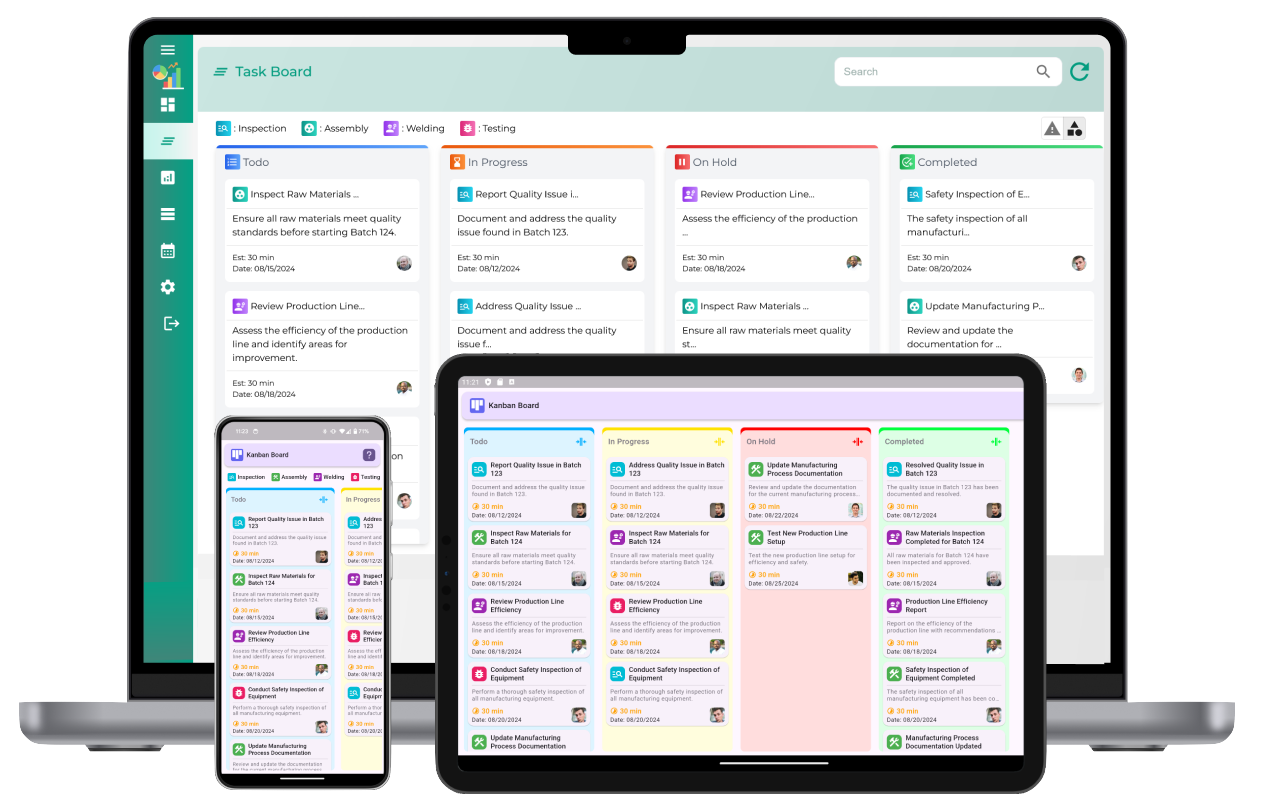A kanban board is a powerful tool used in manufacturing to visualize workflows, optimize production processes, and improve efficiency. By implementing a structured approach, manufacturers can manage tasks, track progress, and reduce bottlenecks in their operations. This guide explores the benefits of a manufacturing Kanban board and provides insights into how to set up and use one effectively.

1. Understanding kanban in Manufacturing
Kanban is a lean manufacturing methodology designed to enhance workflow efficiency. A Kanban board represents the entire production process through a visual layout of tasks or work orders. Each task moves through various stages, such as "To Do," "In Progress," and "Completed," enabling teams to track progress in real time.
2. Key Components of a kanban Board
- Columns: Represent different workflow stages, such as Raw Materials, Production, Quality Check, and Shipment.
- Cards: Each card represents a specific task, work order, or batch in production.
- WIP Limits: Work-in-progress (WIP) limits ensure that each stage maintains an optimal workload.
- Swimlanes: Separate workflows for different product lines, teams, or production stages.
3. How to Set Up a Manufacturing kanban Board
Step 1: Define Workflow Stages
Identify key stages in the production process and create corresponding columns. For example:
- Backlog: Pending production orders.
- In Progress: Tasks currently being worked on.
- Quality Check: Items under inspection.
- Completed: Finished products ready for delivery.
Step 2: Create and Assign kanban Cards
Each task or order should be represented by a card with essential details, including:
- Task description
- Assigned team or worker
- Due date
- Priority level
Step 3: Implement Work-in-Progress (WIP) Limits
Set limits on the number of tasks that can be in progress at each stage to prevent overload and maintain a steady workflow.
Step 4: Monitor and Optimize
Regularly review the Kanban board, analyze bottlenecks, and make necessary adjustments to improve efficiency.
4. Benefits of a kanban Board in Manufacturing
- Improved Workflow Visibility: Enables teams to track progress and manage workloads effectively.
- Reduced Waste: Minimizes excess production and waiting times.
- Faster Response Time: Helps teams quickly identify and resolve production issues.
- Enhanced Collaboration: Facilitates better communication between departments.
5. Continuous Improvement with kanban
By consistently analyzing workflow performance and making data-driven improvements, manufacturers can maximize efficiency and optimize production using Kanban boards.
Manufacturing Kanban board
What is a Kanban board in manufacturing?
A Kanban board is a visual tool used in manufacturing to track work progress, manage inventory, and optimize production flow.
How does a Kanban board improve manufacturing workflow?
A Kanban board ensures a smooth flow of work, reduces bottlenecks, and helps maintain optimal inventory levels.
What are the key components of a manufacturing Kanban board?
Common components include columns for different workflow stages, task cards, work-in-progress limits, and color-coded priority indicators.
How do Kanban boards help with inventory management?
They prevent overproduction and stock shortages by visually tracking material usage and replenishment signals.
What are the different types of Kanban systems used in manufacturing?
Common types include Production Kanban, Withdrawal Kanban, Supplier Kanban, and Emergency Kanban.
How do you set up a Kanban board for a production line?
Define workflow stages, set WIP limits, create task cards, and establish clear movement rules for tasks.
What are the best practices for using a Kanban board in manufacturing?
Maintain real-time updates, set realistic WIP limits, regularly review workflows, and ensure team collaboration.
How does a Kanban board help reduce waste in manufacturing?
By limiting excess inventory, avoiding overproduction, and improving process efficiency.
Can a digital Kanban board replace a physical board in manufacturing?
Yes, digital boards offer real-time tracking, automation, and remote access, enhancing efficiency.
How does Kanban support Lean manufacturing principles?
Kanban minimizes waste, optimizes workflow, and ensures continuous improvement in Lean manufacturing.
What is the role of work-in-progress (WIP) limits in a Kanban board?
WIP limits prevent bottlenecks and help maintain a steady production pace.
How can Kanban boards improve communication in a manufacturing facility?
They provide clear visibility into tasks, priorities, and progress for all team members.
What metrics should be tracked on a Kanban board?
Metrics include lead time, cycle time, work-in-progress count, and throughput.
How do Kanban boards help manage supplier and material flow?
They ensure timely replenishment of materials and reduce supply chain disruptions.
How can manufacturers continuously improve their Kanban system?
By regularly analyzing workflow data, adjusting WIP limits, and implementing feedback-driven improvements.